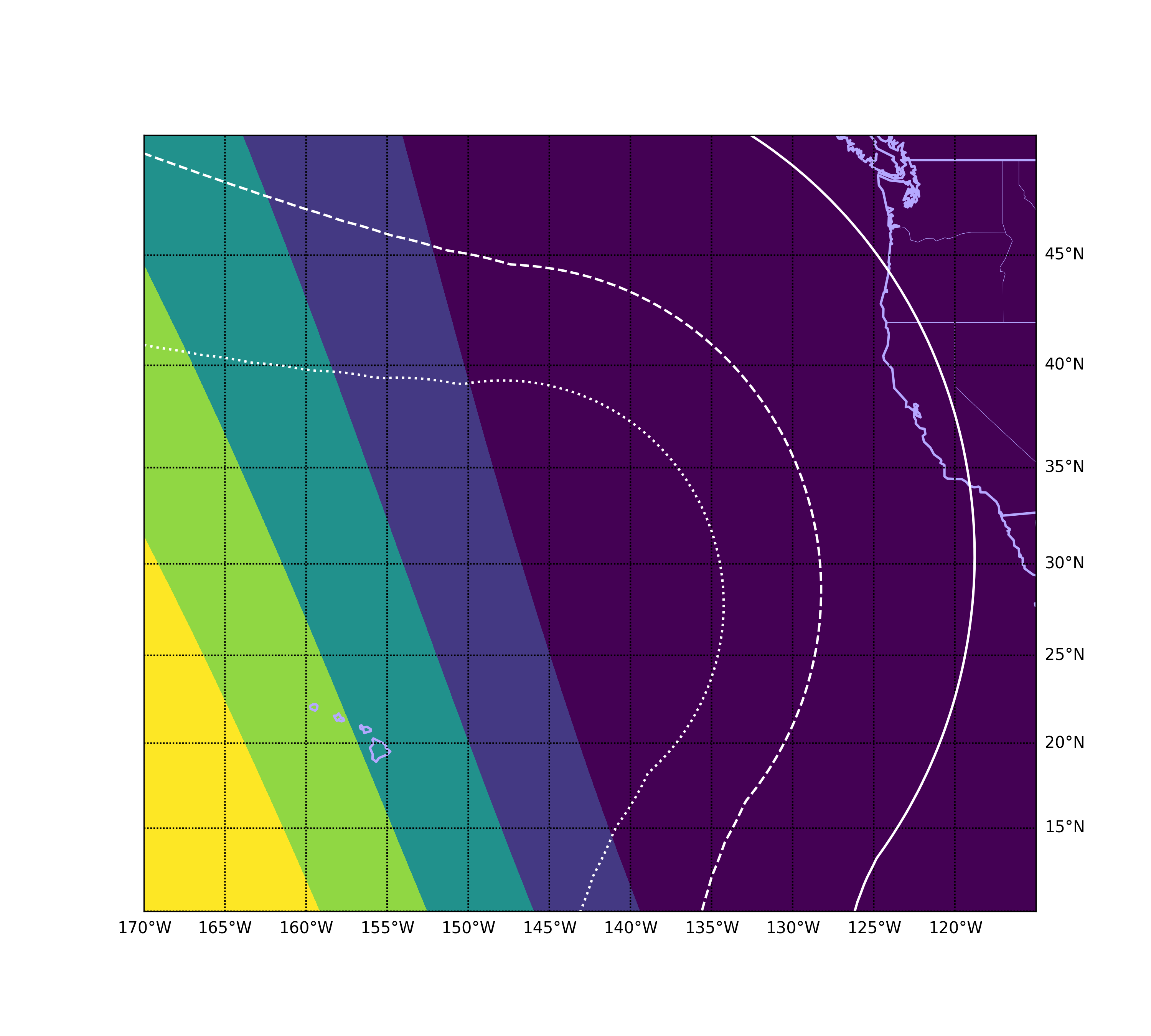Spot The Spacecraft
Dec 05, 2024
The Lucy spacecraft is flying by the Earth, and you may be able to #SpotTheSpacecraft!

During most of the spacecraft’s approach it will be hidden by the glare of the Sun. However, just before closest approach, there will be a brief period (1) where Lucy will cross the terminator and travel over the nighttime side of the Earth while still being illuminated by the Sun. The spacecraft will then pass into the Earth's shadow, disappearing from view. Lucy will reemerge from shadow (2) and be visible by observers with telescopes. As Lucy rapidly returns to deep space it may be visible with a large telescope, though it brightness will decrease rapidly.
Learn more about where and when to look, see the sections below, and if you can snap a photo or movie of Lucy make sure to share it online with the hashtag #SpotTheSpacecraft. To find Lucy in the sky you will need to know where it is either in the celestial sphere from your position (its right ascension and declination), or its position relative to your horizon (the azimuth and elevation). You can get that information from the JPL Horizon Web Application. Note: As spacecraft reflect light in complicated ways, all brightness estimates are approximate.
(1) Before Closest Approach
- Where: Hawaiian Islands
- When: Dec 12 ~6:11pm until 6:13:50pm HST (~4:11am UTC to 4:13:50am UTC)
- Equipment needed: Binoculars, Possibly visible to the naked eye
- Estimated Maximum Brightness: 3rd-4th magnitude
Right before closest approach, Lucy may be visible by the naked eye in the Hawaiian Islands, though observors will be challenged by twilight. Lucy will pass less than 750 miles (1200 km) from the islands, it will move rapidly across the sky. It is expected to rise in the West and travel across the sky until it passes into the Earth’s shadow and disappears from view at 4:14am UTC. Lucy is expected to be brighter and easier to see to the north and west of the islands.
As Lucy is very close to the Earth at this point, the location in the sky will be very sensitive to your location. See the instructions to use JPL Horizons to find exactly where Lucy will be from your location.

(2) When Lucy Emerges from the Earth’s Shadow
- Where: Atlantic Ocean, Western Africa, Eastern South America
- When: Dec 4:26am UTC (11:26pm EST, 12:26am BST)
- Equipment needed: Telescope with a wide field of view
- Estimated Maximum Brightness: 7th-8th magnitude
Lucy will be in the Earth’s shadow at its closest point to the Earth at an altitude around 220 miles (350 km) and will not be visible. At 04:34 UTC Lucy will emerge from the shadow of the Earth. However, as Lucy will be over 4300 miles (10,000 km) from the surface of the Earth by that time, it will be substantially dimmer, at most 7th-8th magnitude. Lucy will no longer be visible with the naked eye and will require a telescope with a wide field of view. The spacecraft will be brightest in areas where the spacecraft solar arrays are pointed more directly towards the observer, and where the angle between the the Sun, Lucy, and the observer are smaller. Observors in the United States will be looking at Lucy more edge-on and at a higher phase angle, so it is expected to be dimmer.
To find where to look for Lucy from your location, see the instructions on how to use JPL Horizons.
